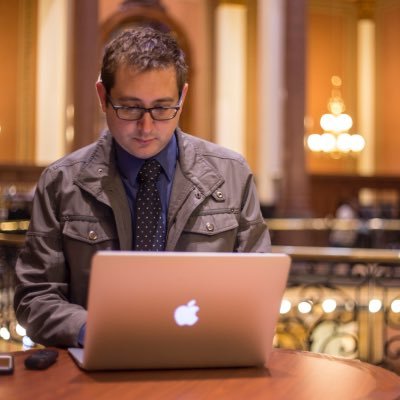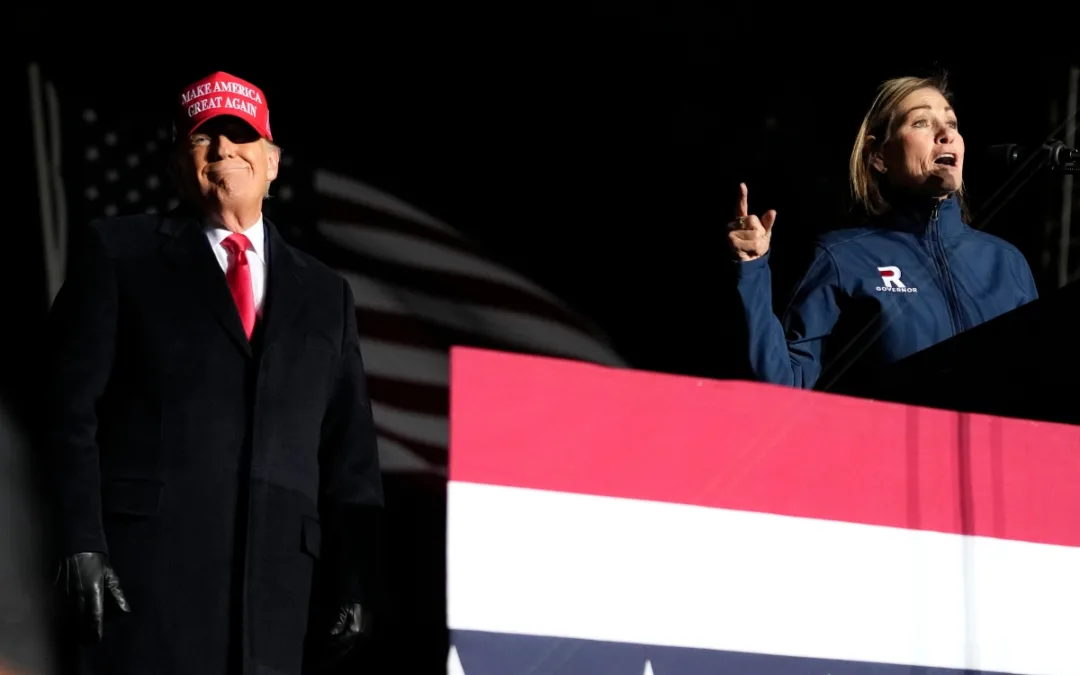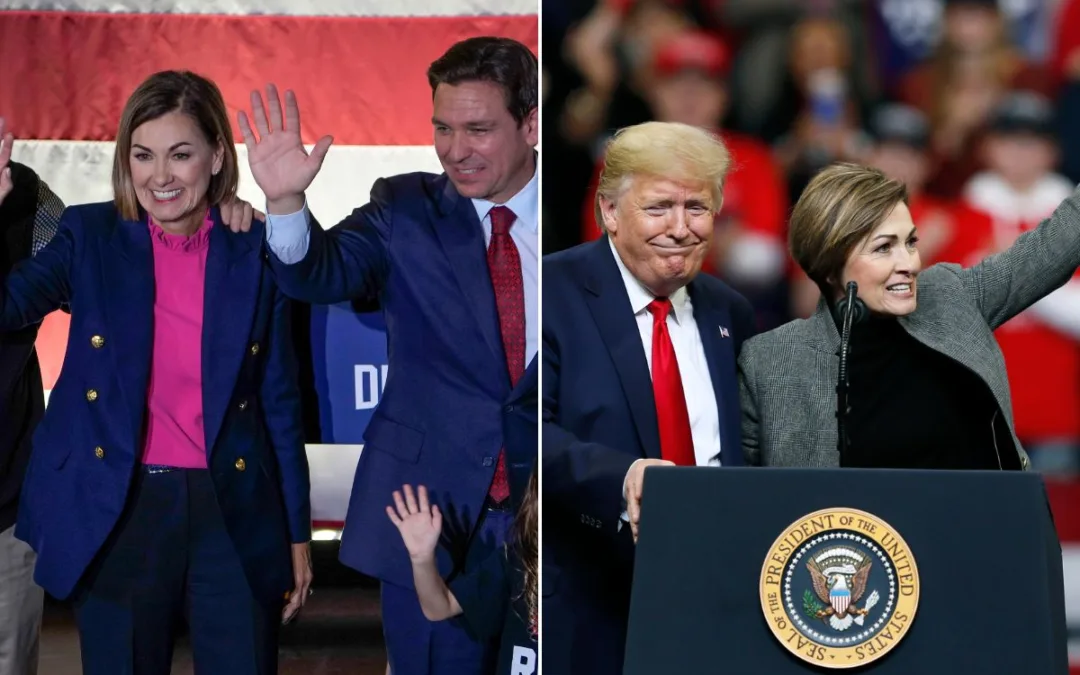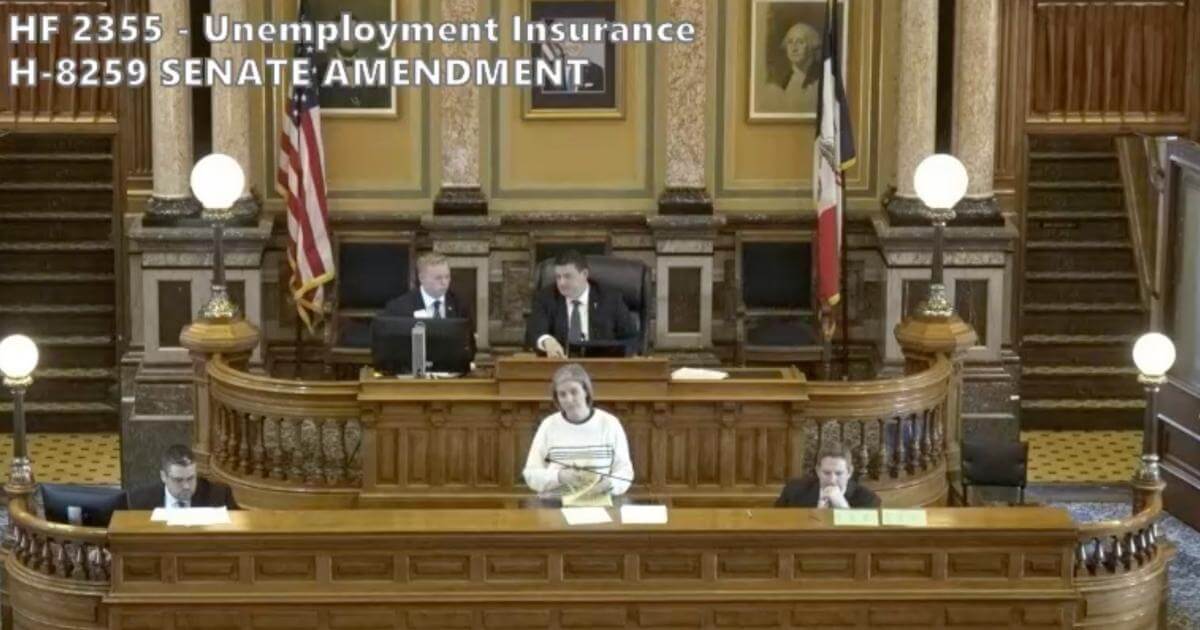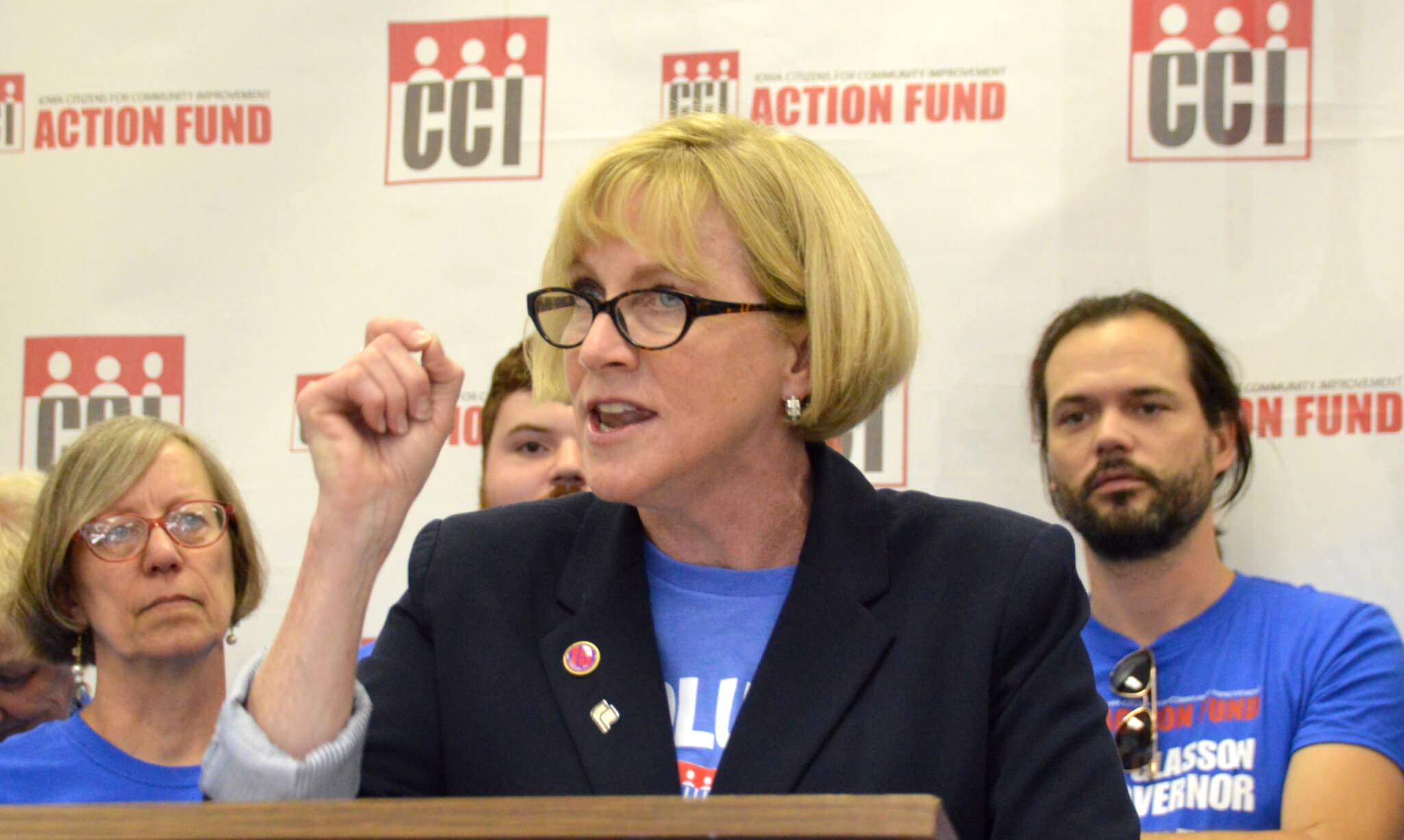
When the ballots were being counted to determine whether or not University of Iowa Hospital and Clinics healthcare workers would unionize, Cathy Glasson – the person who had led the effort for months – wasn’t in the room. Glasson was instead working a 12-hour shift in the intensive care unit where she served as a nurse while the Labor Relations board met. It was in September of 1997, before text messaging was widespread (Glasson didn’t have a cell phone, anyway), so all Glasson could do was wait to get a call in the break room.
The stakes were high, both for the thousands of healthcare workers hoping to have a voice in the workplace and for Glasson herself. The backlash from management to the unionizing campaign was intense, with the hospital going so far as to put armed guards in the hallways to frighten employees from talking to each other. Glasson had been the public face of the union push, and the consequences of a loss might have included her job.
“I had to work that day, I was very nervous,” Glasson told Starting Line. “When you have security guards walking the hall, and you have those intimidating tactics by an employer, you worry that if you lose this vote, you’re not going to have a job. That’s the risk I took … I thought, my god, am I going to leave my 12-hour shift after taking care of intensive care patients all day, am I even going to have a job when I walk about of here?”
The workers ended up voting to organize, and SEIU 199 (Service Employees International Union) formed the next year to represent a couple thousand employees at the University of Iowa’s healthcare system. Glasson kept her job, has led the union ever since, and is now running for governor in the Democratic primary with a focus on better-paying jobs and universal healthcare.
It was an experience that shaped Glasson’s outlook on politics, the economy and the power of organizing movements, things that make up the backbone of her campaign.
“When you see something that you know is terribly wrong, you don’t sit back and let someone else fix it for you,” she said. “This is how organizers think. You actually get out and organize yourself and give power to folks to improve their lives, give them the tools to do it themselves. Our whole campaign is based on empowering working people in our state to join a movement where they have a voice in their government again.”
It was a long and difficult road to get to that point in 1997, and one that almost didn’t get off the ground. When chatter first started about a union early in that year, Glasson, who wasn’t raised in a union family herself, wasn’t sold at first. She initially avoided an organizer from SEIU who tried to meet with healthcare workers about the idea.
“I wasn’t familiar with it,” Glasson admitted of the concept of union organizing. “It was unknown. I wasn’t sure if I really wanted to even stick my neck out.”
But the situation among staff at the university hospital system was getting dire. The healthcare system in the mid-90’s was changing, with managed care organizations being talked about. Hospitals were trying to figure out how to run more efficiently, with some in-patient units being merged and closed.
Registered nurses were having their hours cut, allowed to only work 75% or 80% of what they had been, with no ability to negotiate the changes.
“There was no option,” recalled Glasson. “You either took it or you probably wouldn’t work there.”
That put a heavy burden on healthcare workers who needed the full-time job to support their family.
Meanwhile, the Board of Regents was sending around a VCR video for employees to watch about upcoming changes to their benefits package, which the governing board argued was too generous to healthcare workers. At the same time, wages were being frozen. The hospital had a wage step increase program, so workers typically knew how much more money they could expect to make over the years. Now that was all up in the air.
“All these were happening around the same time, which fueled our anxiety about our future and our ability to do anything about it,” Glasson explained.
All of that led to talk about forming a union, and Glasson came around and decided to meet with the SEIU organizer.
“The organizer was obviously very good at what they did because I actually did eventually meet and have a good conversation about what it’s like to work as a nurse at University hospitals back in the 90’s,” she said.
That kicked off an education campaign with her fellow healthcare employees, with Glasson going around to teach workers what a union would actually mean to them.
“There’s this misperception that the union is some third party,” she noted. “It’s not that at all. That’s what the employer sells the workers when they’re combating the formation of a union.”
Glasson pitched the concept to her coworkers as a way to improve patient care, resolve staffing issues and negotiate for better wages and working conditions. Most importantly, it would give them a voice on the job.
“We spent months door-knocking, making phone calls, talking to as many of our coworkers as we could,” she said. “Going into the hospital on night shift, evening shift and talking to folks on breaks about what having a union meant at UHIC.”
Management sat down with Glasson and other leaders beforehand to try to talk them out of the organizing push. When that didn’t work, the university resorted to heavy-handed tactics.
“If we gave them another chance, they would fix it,” Glasson said was management’s argument. “Then they started handing out documents. If you form a union, here’s what you’re going to lose. The scare tactics started to come out … At the time, I didn’t know how severe it would be. That created some folks who were afraid to even talk about it or who were buying the employer’s line that if you form a union, you forfeit benefits.”
Glasson kept up her efforts, having multiple conversations many times with fellow staff about the potential benefits. As she made progress, management took further steps to shut down the effort. Shortly before the election, the university brought in an outside security company to monitor the hallways, especially on the night and evening shifts when the supervisors weren’t there. That’s when Glasson would go in to speak with workers on their breaks.
“The hospital absolutely wanted to intimidate their employees from actually going in and having those conversations with my coworkers,” she said. “And these security guards, for the first time ever while we were working there, carried guns in their holsters. That, to me, sent a chilling message. Here’s the security guards we’re putting in here to keep you safe from the union – it was sheer intimidation tactics.”
Still, Glasson and others persevered, collecting enough organizing interest cards from employees to take to the state’s Labor Relations Board, triggering an actual election. The voting was scheduled over a three-day period in July.
“It’s like any other campaign, you get all your votes in the ballot box to win,” Glasson explained.
Her work paid off, and the vote to form a union passed by a significant margin. Another organizer made a call into Glasson’s unit to tell her the news, which Glasson waited until her break to take.
“The feeling was, oh my god, we just took this tremendous step forward and now our responsibility is to win and improve the lives of the 4,000 people who I just went out and knocked doors for,” Glasson recalled. “A huge sense of relief and responsibility hit me at that point. I may have started crying, I was so exhausted from the work and the energy you put into this, your whole heart and soul goes into it. It’s something I can’t describe unless you’ve been through a union organizing campaign.”
Hospital management was relatively quiet in the immediate aftermath, with employees sensing the shift in power almost immediately. The success drew national attention as it was traditionally rather difficult to unionize healthcare workers.
Organizers held a big victory party after the vote, then quickly set in on crafting a contract. It wasn’t easy, with employees covering 30 different job classifications that worked in different clinics and different hours. Glasson wanted to prove their employer’s worst fears wrong and come up with a contract that adequately addressed every unit’s needs. Negotiating begun that Fall for a contract that went into effect in July of the next year.
SEIU 199 was able to secure guaranteed wages and raises, a much-needed boost after having wage freezes for several years. They also won time-and-a-half pay during holidays. Previously, healthcare workers didn’t receive any extra pay for working away from their families on major holidays. And the union protected their original vacation and leave benefits that the university had been threatening to reduce.
“Did we get everything in the first contract? No. But we set a solid framework to build the following contracts on, and that was important,” she noted.
Because of their unionizing success in 1997, healthcare workers in the Iowa City area have seen real, tangible improvements to their lives, economic security and healthcare. That effort has stuck with Glasson as an important lesson on the power of local organizing as she campaigns across the state this year on her gubernatorial bid. One quote about organizing in particular, from Fred Ross, Sr., still helps guide her in politics.
“If you think you can do it for people, you’ve stopped understanding what it means to be an organizer,” Glasson said. “I think that defines what I am as a person and as a candidate.”
by Pat Rynard
Posted 10/10/17
Politics

Biden marks Earth Day by announcing $7 billion in solar grants
The Biden administration on Monday announced the recipients of its Solar For All Program, a $7 billion climate program that aims to lower energy...

6 terrifying things that could happen if the Comstock Act is used to target abortion
Does 1873 sound like a really, really long time ago? Well, that’s because it is—but if Republicans and far-right anti-abortion activists have their...
Local News

No more Kum & Go? New owner Maverik of Utah retiring famous brand
Will Kum & Go have come and gone by next year? One new report claims that's the plan by the store's new owners. The Iowa-based convenience store...

Here’s a recap of the biggest headlines Iowa celebs made In 2023
For these famous Iowans, 2023 was a year of controversy, career highlights, and full-circle moments. Here’s how 2023 went for the following Iowans:...

